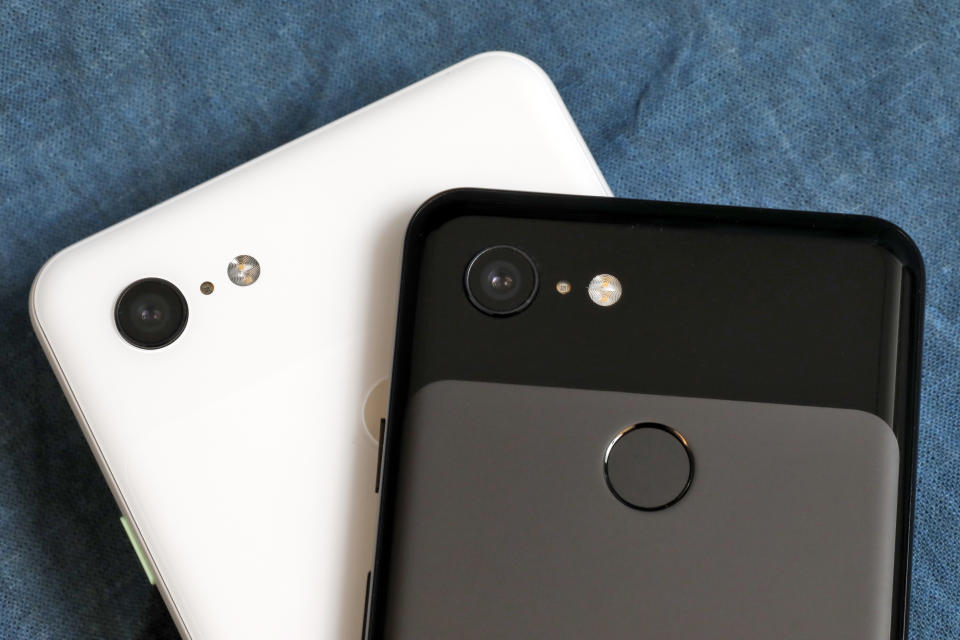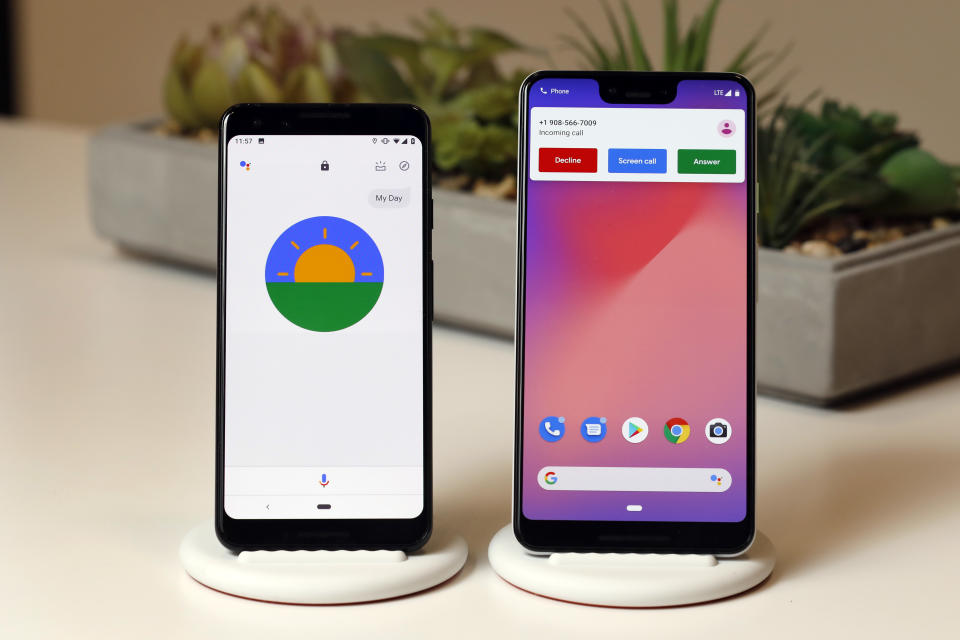Google's new phones are good enough to lure iPhone users

Google’s new Pixel 3 and Pixel 3 XL phones may be the only phones that can actually compete with the iPhone.
The Pixel phones aren’t necessarily the fastest or have the best spec’s — Samsung’s Galaxy series is usually considered to be at the top of that list — but they’re the only non-Apple phones that most iPhone users would ever even consider trying.
That’s because they’re really, really similar to iPhones. In fact, during the past week using the new Pixel 3, as with the Pixel 2 before it, I’ve summed up my experience with the quip: “New from Google: the iPhone.”
Google, like Apple, gets it right. The proverbial “they” say that we only use 10% of our brains (this is not actually true), and the same could be said for phones. You probably don’t utilize most of your phone’s capabilities, nor are you likely to care deeply about specs, benchmarks, megapixels, or milliamps.
Instead, you do probably care about three key things: how it looks, the camera, and how easy it is to use.
Apple has long made these three things the pillar of how it thinks about making phones, and Google’s late entrance to mobile has allowed it to see the success of this model — and add something new of its own. Let’s break it down.
How they look and feel
From the outside, it looks like an iPhone. The smaller Pixel 3 is very similar to the iPhone X models in size, shape, and has fit and finish that is comparably haute. The large screen on the Pixel 3 doesn’t extend so far to the top of the phone as to require a notch like the iPhone X series, but the Pixel 3 XL does.
Both are brilliant, crisp, and extremely impressive, but I always downplay these things. Unless the screen is really bad, most people only ever notice a shortcoming when a phone is directly next to something better.
In your hand, the phones feel perfectly fine – it’s just a phone.

For this Pixel, however, something is new that some people may like: it has wireless charging via a $79 device called the Pixel Stand. When you set it on the stand, the phone essentially turns into a temporary version of a Google Home device, allowing you to have a convenient hands-free experience if you need one.
The camera is jaw-dropping
The camera is incredible. It’s no surprise so many tests have found it to be the best phone camera in existence, as its Pixel 2 predecessor was.
Interestingly, the specs haven’t changed, a fact that illustrates what is really going on with phones as they continuously modernize. Instead of boosting the sensor, Google has managed to improve the camera significantly by leveraging its forte: software and processing. It’s like working smarter instead of more.
For example, by taking a bunch of pictures as your hand wobbles and stitching them together, Google has enabled an impressive telephoto substitute without actually a telephoto or dual lens. Similarly, the camera is the same, but the processor and software now lets the camera lock focus on someone and track them, even if they move away. There are a few other features that most people don’t use that Google added, like an automatic photobooth and wide-angle selfie option, but most people probably won’t care much.
Of course, all of these extra things beyond “takes good pics,” while great, don’t really matter as much as Google and Apple think they do. Phone cameras are really good, which is perfectly illustrated by the fact that they have completely replaced a seperate camera for most people.
Phones are better when the software maker is also the hardware maker
Unlike other Android phones, Google makes both the phone and the software (like Apple does). There is no weird bloatware added by a third party, so everything runs smoothly and intuitively. But not only does Google avoid missteps with its smooth, easy-to-use interface, its full control of the phone of the operating system enables it to do some interesting things.
You can point the phone’s camera at a piece of paper and select and copy text, which is a useful feature. The voice assistant, if you’re into that sort of thing, is impressive, which should come as no surprise given Google’s enormous reservoir of services, data, and your data.
The craziest feature, however, is the call-screening function. When a call comes in, the Pixel — and soon older Pixels too — can answer the phone for you and interrogate the person on the other end, while providing you a real-time transcript. You can send a robocall to a robot.
It’s really good, but let’s not get too excited. It’s a phone.
The Pixel 3 and Pixel 3 XL are terrific. Some reviews might talk about how the notch in the Pixel 3 XL may not let you see as many notification icons as you want. Other reviews may take a hard left into thought-provoking tech criticism.
But for most people, it’s all about the basics, and the Pixels check the boxes. If you’re an Android user, it’s an opportunity to take a step towards an iPhone and its beautiful interface while keeping it Android. If you’re an Apple user, it’s an opportunity to try Android while still feeling safe, or to try Google’s phone service, Project Fi.
On this front, Google has a trick up its sleeve. The iPhone Xs costs $999, and the Xs Max costs $1,099. Meanwhile, the Pixel 3 costs $799 and the 3 XL costs $899 – $200 might not sway a big Apple fan, but it may certainly sway some people.
The phones are currently available for pre-order and will be sold via October 18 at Verizon, Project Fi, Best Buy, and Google Store.
–
Ethan Wolff-Mann is a writer at Yahoo Finance focusing on consumer issues, retail, personal finance, and more. Follow him on Twitter @ewolffmann.